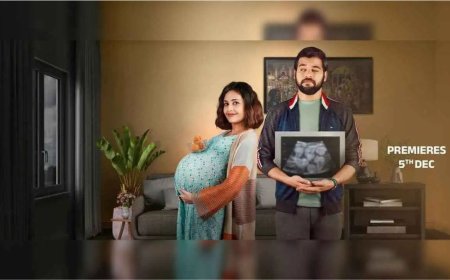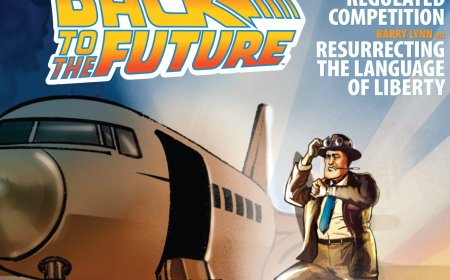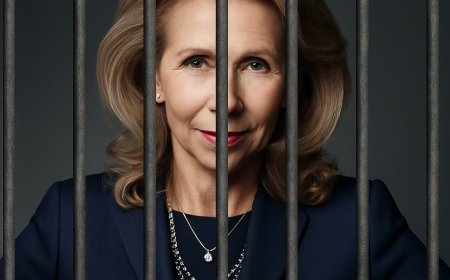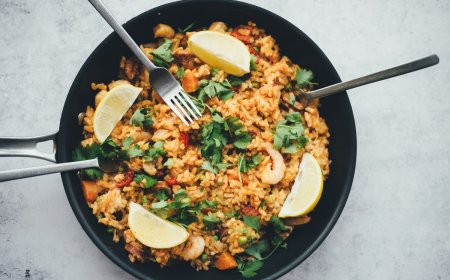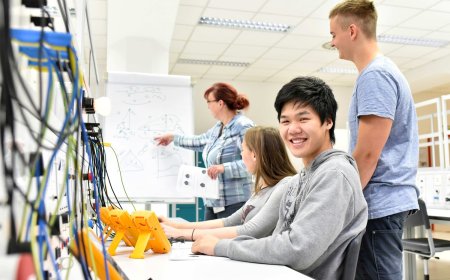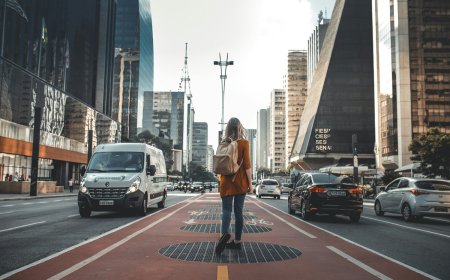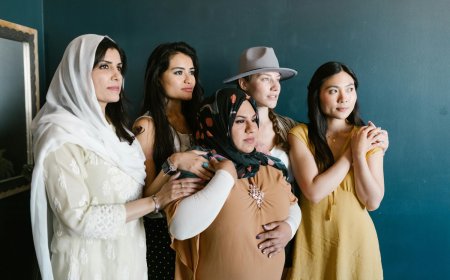SJD8 #15: Staying with the Local: Acting with Resilience

This is the final blog in the series 'Spatial Justice in Dublin 8' (SJD8 #15), as a contribution to Maynooth University Social Justice Week 2022 in partnership with Maynooth Geography and Common Ground.
Common Ground has been working since 1999 as a local arts organisation in the complex, constantly changing inner-city areas across Dublin 8 from Inchicore to Rialto. Since our establishment we have formed relationships with artists and community through partnerships that work through collective responses to issues of spatial and social justice, communities of care, housing development, climate change, ecology and the urban environment, and now the impact of Covid 19.
As a learning, locally based arts organisation, we recognise and respond to the complex landscape and interface we are sited in and chose to use the twin methodologies / practices of socially engaged arts practice and community development. There is a well-developed and sophisticated community and youth development matrix in the area where we are located. This both challenges us, as it should, and sets rigorous debate and questions about how and why we work together.
Common Ground’s place-based / arts practices continue to emerge and develop, and we understand them to reveal the ongoing, unpredictable and multiple dialectics between power and resistance, art and activism in a sited place. The reality is that it is slow work, it is not very well funded and it explores issues of power, conflict and tension all of which, we believe, are central to the reality of all collective creative processes. If we examine the 2016 Census (CSO) small area thematic maps of the area where we are located (Dublin 8 includes Kilmainham, Inchicore, and Rialto), we can see a site of imperialism, colonialism (Kearns SJD8 #3 ‘The Urban Palimpsest of New Kilmainham 1911‘), a new republic, and a site of its consequent social and economic neglect (Kearns, SJD8 #2 ‘Historical Geographies of Injustice in Dublin 8‘).
This complex and layered history of the area has been explored in depth across decades and most recently, through the excellent ‘Spatial Justice in Dublin 8’ blog series, published on ‘Eye on the World’ by our Just City Counter Neighbourhood award partners Maynooth Geography and its MA in Spatial Justice students. This series of blogs, published as a part of Maynooth’s University’s Social Justice Week 2022, also coincided with our recent presentation ‘Staying with the Local’ at the Arts Council’s Places Matter 2022 Conference in Carlow.
Working in partnership brings a rigour to Common Ground’s practice and our sense of and understanding of place. Essentially our partnerships include those with community groups, artists and, now, academics. They inspire, extend and ultimately critique our inter-disciplinary practices, influencing how we connect to communities in and beyond Dublin 8. In recent years we have begun working with the Departments of Geography at Maynooth University and UCD with staff and students who have bought another level of context and care to our conversations to our relationships with artists and local community groups of both place and interest.
How did we get here?
Common Ground emerged from a shifting, political background of government structures from the 1990’s. In that decade the Irish Government was proactively working in partnership with the European Union to secure development and the funds to address multiple social and economic issues. These included long term unemployment, poor quality public housing, early school leaving, and significant drug use.
Local area partnerships were formed in response to this challenges. One of the last to be established was the Canal Communities Partnership, catering for a population of approximately 12,000 people at that time. By 2016, it increased to 19,000 (CSO, 2016).
In 1997 the Canal Communities Partnership commissioned research called 2020 Vision. It recommended that a more long-term, dedicated arts agency or organisation should be formed in the area so that the strength of arts projects and programmes, which, in the 1990s, took place on an ad hoc basis could be sustained and expanded (projects included: the Rialto Youth Project, Wet Paint Arts, the collaboration of the Irish Museum of Modern Art with the Family Resource Centre, St Michael’s Estate Inchicore, resulting in the exhibitions Unspoken Truths and Once is Too Much; and the St Michael’s Youth Project). The formation of this new arts organisation was supported by local residents and activists from local community development projects. Subsequently European Regional Development Funds were granted to secure and found Common Ground as an arts development organisation for the Canal Communities area, spanning Inchicore, Rialto, Kilmainham, and Bluebell in Dublin 8 (Common Ground, 2006).
Places and Connection. Places and Care. Places and Power.
Common Ground holds a set of values that were founded on social justice, critical reflection and hard questions about education, equality, housing and spatial justice issues. Making art, is, of course, a response to those questions.
As the breadth and diversity of the blogs on Eye to the World show us, places are complex and they carry memory and history. That includes trauma and shame. That is of enormous significance where we are based. I once bought a Dutch art curator to Tales from The Promised Land on St Michael’s Estate (2008) (Figure 1); we walked around the area and when I described the landscape of St Michael’s, its colonial and social history, he described it as a ‘guilty landscape’. The field, where St Michael’s Estate once stood can be regarded as a symbolic register that holds the story of Ireland. It has been built up and dismantled many times, often with the hope and intention of erasing its multiple histories of settlement, colonisation (see Whelan, SJD8 #5, ‘Inchicore as Battleground’), resistance (see Gifford, SJD8 ‘A Radical Historical Geography of Inchicore’ and Duff SJD8 # ‘Activism and Housing In/Justice in Dublin 8’, re-adjustment, and migration — as told in the stories, songs, and games of the people in the area (see Cahill, SJD8#10: ‘Soccer and the Making of Place in Inchicore’).

Common Ground prioritises and applies hope and care to this landscape along with acts of resistance. At this moment in time, I’d like us to consider the labours of care that go into repairing and reimagining our communities, our places and to discuss how our work as an arts organisation with the artists, groups and activists we work with, is central to that. Silvia Frederici reminds us that ‘creating feminist commons entails struggle and hard work but the result might teach the importance of community including those of liberation and solidarity, of awakening and care, and multi-species relations of social – ecological repair and regeneration’ (Till, 2020: 54). Till’s summary of Frederici in this quotation always reminds me of our work and how we stay close to the sources of the trouble, as do many others we know.
In the ACE report, Ciaran Benson (1989) writes about art as a way of living, as a means of power. He raises the question of who controls or possesses power – a central question that we come back to in our work in Common Ground again and again. It is also central to planning and spatial development of our places, our cities or towns and villages. For us this question is vital in how we consider the role of artists, acts of regeneration, the idea of ‘placemaking’ and how we make real space that supports local people to challenge, resist and become resilient in order to cope with change.
Where we are located there are always macro and minor challenges. The reality is you cannot have places without people and how you choose to engage and communicate is crucial to ownership and care of that place. For us it is the people who make the place. And they matter.
Presently Dublin 8 faces ongoing hidden social and economic changes as well as visible ones in terms of its physical landscape as an area of continuous redevelopment. The area contends with the histories and realities of slow, failed regeneration of social housing and flat complexes, the development and proliferation of extensive build to rent only apartments and proposed cost rental models some of which exclude the indigenous communities, aparthotels and student housing. While the advent of the New Children’s Hospital is also bringing new people, facilities, and resources to the area, many who live here feel displaced as the area changes rapidly, while others see these changes as an opportunity to create a more demographically and ethnically diverse community.
As the community and neighbourhoods adjust to this massive transformation, making space for the arts and creative activities are crucial in encouraging community participation and connectedness (see Fitzgerald, SJD8 #12, ‘Art in the Face of Urban Trauma’).
What does the hyperlocal offer as a site of resistance, resilience, making and engagement?
Our work is continuously energised by staying true to the local. Our research, independently and with others can develop imaginative strategies that sustain and grow our relationships as we collectively navigate our way towards a constantly changing urban future. Working with our partners has opened up possibilities for artists and the immediate community to respond to their place and the issues that may affect them on a daily basis.
Negotiation is pivotal in our work, and includes listening to differences and balancing needs of the everyday and the work and practices of our partners. We have worked hard to develop strong working relationships, and this demands investment and time in negotiation brokering and mediation skills. It is complex and it raises a set of difficult questions that is often reflected and addressed through the artworks that are created. It is also important to know and hold onto your values when you act as an arts organisation. Be present to the issues at hand and to respond to them and know when to step in and when to step back. As Kae Tempest (2020) writes: ‘Craft is the hard work. Connection is the reward’.
In 1999 we established and secured the development of studio 468 with Rialto Development Association, in the community centre of St Andrews which they own and manage. In 2019 Common Ground moved into The Lodge (Figures 2 and 3), a new more secure base and resource in Inchicore, (The Lodge is owned by Glasnevin Trust). This marks a new phase in our development and one which will open Common Ground up as a more public arts and community venue that enables us to diversify our, already, inclusive and dynamic socially engaged practices. The Lodge now functions as our headquarters, office base, and hub of our arts activities.


Figure 2. Goldenbridge Cemetery (left top), The Lodge, 2008 and 2017 (left bottom), Inchicore, Dublin 8. Photographs by Seoidín O’Sullivan and Common Ground. Figure 3 (right). The Lodge, 2019. Images courtesy Common Ground.
Both studio 469 and The Lodge are high quality workspaces managed by us as, a modestly funded arts organisation. Their establishment are a combined local development response to the benefits of arts and cultural work that took place across Dublin 8 for the last three decades.
Since the first artist residency in studio 468 in 2003, this space has become a rich resource in the community of Rialto and wider Dublin – hosting international as well as Irish artists across disciplines and art forms and some with a particular interest in socially engaged art practice. In its first two decades, studio 468 supported the early and emerging practices of interdisciplinary and socially engaged practice including artists Fiona Whelan with Rialto Youth Project and Brokentalkers, which included the community-based projects The Natural History of Hope and Policing Dialogues. Filmmaker Anne Maree Barry produced Rialto Twirlers (Figure 4), and more recently Vinny Murphy and the Rialto Community Drug Team produced the film Fatima Was Me City (2021) (Figure 5).


Recent long term socially engaged art projects that have addressed these complex spatial justice issues include artist Seoidín O’Sullivan’s projects: HARD/GRAFT, which addressed the need to improve and recover Dublin 8’s ecology, not just through planting orchards but by green activism, training, and assessing and documenting future needs (part of CITIZEN ARTIST 2016-18); and a related larger collaborative research project, Mapping Green Dublin (2021) with UCD Department of Geography (Figures 6 and 7).


Figure 6 (left). HARD/GRAFT planting in Dolphin House flats complex, Rialto, Dublin 8, 2019. Photograph artist Seoidín O’Sullivan. Figure 7 (right). PLOTS installation by Seoidín O’Sullivan with Eoin O’Mahony, Mapping Green Dublin, 2020. Photograph by Jason Sheridan. Images courtesy Common Ground.
Equally, artist and activist Kate O’Shea’s response to The Just City Counter Narrative Neighbourhood award 2020-2022, How Much is Enough?, constructed multiple welcoming spaces online and in person in studio 468 where all kinds of opinions could be discussed in a really inclusive, non-threatening way, while also making deeper connections to activists across the world (Figures 8 and 9) (see also Till, ed., SJD8 #13 ‘Art and Spatial Justice in Dublin 8: A Conversation with Artist Kate O’Shea (Part 1’) and SJD8 #14: ‘”Who is it For?” Art, Life and Politics in Dublin 8 and Beyond: A Conversation with Artist Kate O’Shea (Part 2)’).


Figure 8 (left). How Much is Enough? temporary print installation, Goldenbridge Cemetery by artist Kate O’Shea ,with screenprints on fabric made in collaboration with Josh McPhee and Emma O’ Hara, 2020. Photograph by Kate O’Shea. Figure 9 (right). How Much is Enough? installation and event at studio 468, St Andrew’s Community Centre, Rialto Dublin 8, September 2021. Photograph by Ray Hegarty. Images courtesy Common Ground.
Artist Pat Curran and his painting practice also built a body of paintings that reflects the place and flat life in former Fatima Mansions, St Michael’s Estate and Dolphin House, where he grew up (Figures 10 and 11), adding a rich body of work to Ireland’s painting canon, not as an outsider looking in, but as a person who experiences the place with all its realities and a deep sense of belonging to that place. Pat was one of Common Ground’s artists in residence from 2019-21 in The Lodge.


Figure 10 (left). Are You Looking? painting by Pat Curran, Oil on PVC 2019. Photograph by Louis Haugh. Figure 11 (right). Eric, painting by Pat Curran, Oil on PVC 2019. Photograph by Aislinn Delaney. Images courtesy Common Ground.
Both studio 468 and the Lodge have built many positive partnerships and made way for numerous, new and positive relationships, that live beyond their residency timeframe. These include: Kate O’Shea and The Just City Collective and the Networks of Solidarity connections that Kate and Enya Moore organised; the D8 Green Bridge Forum that emerged from Mapping Green Dublin research with Seoidín O’Sullivan and UCD Geography; and Fiona Whelan’s deeply embedded relationship with Rialto Youth Project.
It is also important to acknowledge our other programmes of work with children and young people, including the music programmes Music for Me, Republic of Sound and Tiny Voices, and our new literature partnership with the Stinging Fly. In 2022 we look forward to working with artist Evelyn Broderick as part of our new award, A Radical Imagination, and will be hosting a series of short-term developmental residencies.
Community based cultural spaces like studio 468 and the Lodge act as a space that hosts difference and rigorous conversations between local people and artists on neutral ground. As I mentioned previously this is our ambition for The Lodge. Our work with artists, community groups, and others has expanded our place based and sited practice substantially and organisationally and built new local initiatives or collectives that live beyond the award or residency.
Critically throughout the last recession and the Covid 19 pandemic, we have found mutual supports via Family Resource Centre former St Michael’s Estate Inchicore, Fatima Groups United, IMMA, F2 Centre and St Andrew’s Community Centre. These are critical to maintaining and expanding local relationships and augmenting our work. One thing we did learn during Covid 19 is that we were not all in it together (see also Brophy, SJD8 #11 ‘Geographies of Violence Against Women and Creating Safe Spaces in Inchicore’). We saw this in the fallout of how care homes were left in a seriously challenged mess, how online education became inaccessible for many, and how for older and younger people, isolation was felt even more deeply. Local groups and organisations including Common Ground will be stepping into that breach over the next five to ten years as we move in and out of the pandemic.
Narratives
In Ireland places are often branded and labelled. Carlow was once the market town or ‘Sugar Town’, referencing its long association with the sugar factory. Other towns were the ‘Barracks town’, referring to Richmond Barracks, which became Keogh Square when stigma and opinions formed and continued to transfer to those living in the former St Michael’s Estate. While these narratives are self-perpetuating locally, they contribute to the growing grow disconnection between people in neighbourhoods. On a macro level they contribute to clashing ideologies around ‘placemaking’ and the realities between and how local people are considered or engaged with how the cities and urban spaces are planned. The latter often seek to erase and ignore the history of the place.
Consequently, we are conscious and alert to how narratives about Dublin 8 are being circulated and established. How a ‘place’ is viewed is not only interesting but essential to new branding both positive and negative. Dublin 8 is now the city father’s flagship commodity. A recent article in The Irish Times reported that ‘Dublin 8 is “primed for prosperity”, alongside four other global neighbourhoods’ (Reddan, 2022, n.p.).
Central to our development of the Just City Counter Narrative Neighbourhood award was the prioritisation of questioning spatial justice issues, in particular the way in which the urban and social fabric of inner-city Dublin is currently encountering forms of spatial injustice through the acquisition, development and management of neighbourhood housing, private rented accommodation and public space. When we formed the brief for this programme, it was in resistance to what the city was positioning itself as and the narratives that were surrounding us and being promoted.
Over the years we have learned that change and development is slow and that dissent and conflict is often facilitated quietly and slowly. Our work often reflects on our contemporary world in ways that we could never have imagined, and we are proud to have worked with a rich resource of critical allies, artists and networks. For us partnerships have moved to alliances.
Covid and the economic recession reminds us that we had to act in solidarity with each other. Sometimes we need to say no or make spaces that allow dissent to be aired and listened to so that everyone feels their voice is heard and future conflict can be avoided.
Now more than ever people and communities need safe social spaces where they can gather and create. The arts open up imaginative, but safe ways of dealing with challenges, fears, trauma, anxiety as well as joys and pleasures. This is more urgent than ever with the impact of Covid 19 where local people will orientate to the local to make sense of the pandemic. In PLACES so that they MATTER. The arts can create safe spaces, ‘imaginaries’ where you can know or see the worst, challenge and prepare for it and work towards a better future.
In closing I urge us all to consider places of care in relation to our present and future covid response and a very difficult global situation across the world in Afghanistan, Ukraine and Palestine. It’s vital that we remember how important Love, Care and Solidarity are when looking at how places change and how we invite and care for those who are leaving and those who are entering the place where we live.
As Karen Till identified in the opening blog for the ‘Spatial Justice in Dublin 8’ series as part of the Maynooth University Social Justice Week 2022:
‘Only by working with living communities and local experts can we address past and ongoing forms of injustice to realise healthier and more sustainable communities together. This remains especially important as the UN’s 2030 Agenda and its Sustainable Development Goals (SDGs) (UN, 2022) remain unclear about who decides what precisely is to be sustained, by and for whom (including more-than-human lives), and over what time periods. Also unclear is who is responsible for already existing unjust processes, practices, and outcomes that have resulted in unsustainable places, communities, environments, and practices, and may continue to damage our future relations. If we want to create sustainable communities that support relations for a healthier and less damaging future, and are inclusive of inter- and intra-generational and multi-species equity, a decolonising and geographical approach to justice is needed. Reframing UN SDG 11, ‘Sustainable Cities and Communities’ (as well as other SDGs) from such an approach means to study and change processes and structures that led to and reinforce injustice’ (Till, SJD8 #1: Sustainable Communities and the Publicly-Engaged University).
Finally, I am thinking particularly about Kathleen Lynch’s reminder that ‘that our survival depends on Love, Care and Solidarity and that affective inequalities are serious political matters. Human flourishing requires caring and loving’.
Let us care for and love our Places and all who live in them.
— Siobhán Geoghegan
Siobhán Geoghegan is the Director of Common Ground, an arts development organisation based in Inchicore, Dublin and was employed in 1999 to set it up with other local activists. Siobhán was born and reared in London. She moved to Ireland in 1980 and was educated at Limerick School of Art & Design, Crawford College of Art and UCD H. Dip Arts Admin. In 2011 she completed an MA in Art in the Contemporary World at the National College of Art and Design (NCAD) in Dublin.
Acknowledgements
This blog series for Eye on the World coincides with artist Kate O’Shea’s closing months for The Just City residency award 2020 – 2022 and our collective presentation with Kate and Enya Moore as part of the Arts Council’s Places Matter 2022 conference.
The rich breadth and depth of these blogs outline the context and place where Common Ground works. We extend a special thanks to Karen Till, Gerry Kearns and all of the MA Spatial Justice students for their excellent contributions. We especially thank all of the artists that have journeyed with us over the years and the local community and the community activists from whom Common Ground and I have learned so much.
Special thanks also to our Board members Catherine Marshall and Rita Fagan for their contributions to these blogs and my colleague Ger Nolan for constant support, editorial patience and wisdom.
References
Benson, C. (1989) Art and the Ordinary: THE ACE REPORT. Dublin: The Arts Council.
Central Statics Office of Ireland. (2016) CSO Maps. [Online]. Available at: https://cso.maps.arcgis.com/apps/webappviewer/index.html?id=4d19cf7b1251408c99ccde18859ff739 (accessed 11 April 2022).
The Common Ground. (2006). Two-Year Strategic Plan, 2006-2007. Available at: https://www.commonground.ie/wordpress/wp-content/uploads/2008/10/images_commonGround2yrPlan.pdf (accessed 11 April 2022).
Reddan, F. (2022). Dublin 8 is ‘primed for prosperity’, alongside four other global neighbourhoods. The Irish Times. [Online] Available at: https://www.irishtimes.com/life-and-style/homes-and-property/dublin-8-is-primed-for-prosperity-alongside-four-other-global-neighbourhoods-1.4823561 (accessed 11 April 2022).
Tempest, K. (2020) On Connection. London: Faber and Faber.
Till, K.E. (2020) Community Orchards in Dublin 8: Planting Urban Ecologies of Care through Hard/Graft In Till, K.E., ed. (2020). Earth Writings: Bogs, Forest, Fields and Gardens. Maynooth University Department of Geography: Cassagh Press, 50-59.



